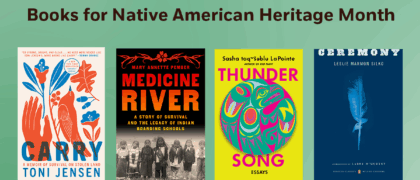Chapter 1
The Art of Connecting
What a lot we lost when we stopped writing letters!
You can't reread a phone call.—Liz Carpenter
You’re so connected. You check your messages from a gizmo in your pocket, a laptop on your kitchen table, and a desktop in your office. You read email from work while you are at home and personal email on the job. You send out jokes, photos, breaking news, invitations, and announcements. You phone people between classes, on the train, and before a concert. (When you phone from the bus, you always seem to sit next to me!) You leave lots of messages, often timing your calls to avoid actually talking to anybody in person. You buzz your friends’ cell phones with telegraphic short text messages, converse in real-time cyberspace with instant messages, and add a sticky note to any piece of paper you send around.
Although you’ve traded quality for quantity, you’ve still got all your connections covered. You don't even buy a quart of milk without a quick text message home to see who wants fat-free and who wants 1 percent. Your family and friends know that you're thinking of them, even when those thoughts only come out as “How r u?” on their cell-phone screens. You may not feel sure that you’ve used exactly the right format for every message, but overall, you’re so connected, you couldn’t be missing anything. Or could you?
In spite of all of your efforts, you may still be missing the most satisfying, expansive, resilient, creative way to keep in touch—the personal letter.
HOW IS A LETTER DIFFERENT FROM A NOTE?
A personal letter takes longer to write than the few abrupt sentences you bang out without proofreading before you click on “send”; it takes longer to read than the blink-and-delete blitz that helps you purge your inbox; and it digs deeper than the brief handwritten note that you drop in the mail. A letter deals with issues that deserve more than a minute of attention. It aims to strengthen a relationship, not just react to a situation. A letter isn’t limited to a specific message like “Can you come over?” or “Thank you for the birthday check.” Rather, it can take both the writer and reader on an excursion that sets off from a home base of mutual trust: “I know you’ll be interested in what I think” or “I'd like to hear your ideas on this.” Whether it comes into your life onscreen or through the mail slot, the well-thought-out personal letter is irresistible to read aloud, mull over, respond to, read again, and save.
Good letter writing feels much like good conversation, and it has the same power to nourish a relationship. It even includes the same critical ingredient of taking turns, since the best way to start writing a letter is to begin where the two of you left off, by picturing your last get-together or by rereading whatever the person sent to you. Letters allow your conversation—and your thoughts about each other—to amble along at a leisurely pace, even while other parts of your lives are galloping by.
The next time you need to connect with someone who matters, on a subject that requires more than a snap reply, stop and ask yourself,
Is there a better way to do this? Is your connection as warm and strong as it could be? Think about what it feels like to settle into a personal letter that's been written just for you. Remember how connected it makes you feel, how valued and cared for. Couldn’t you use more of that in your life? Whether it arrives in an envelope or on a computer screen, the personal letter is a small masterpiece in the art of staying connected.
Personal letters carry thoughts and feelings that don’t come through as clearly any other way. They tap into a rich stream of history, send your reader unmistakable proof that you care, and offer an outlet for your creativity.
Even though you appreciate this lost art, you may still doubt your ability to be this kind of artist. Let’s try to pinpoint what is holding you back. Is it the time involved? Are you at a loss for what to say or how to say it? Do you worry about the rules of letter writing? Although you will find in this book a wealth of guidance and ideas to get you started, remember that the aim of letter writing, like any art, is better expression and connection. The point is not to create perfect letters, but to reach out to the people you care about in a more engaging way.
WHAT YOU WILL FIND IN THIS BOOK
The first part of this book covers the basic tools and formats, as well as fresh ideas to help you feel confident about what and how you write. The second part includes tips for writing common kinds of letters, with sample letters to inspire you to write (or type) on your own. All you need to do is focus on how satisfying letter writing can be. Like walking to the store instead of driving, you can build your letter-writing muscle by finding ways to integrate letters into your routine. Just because you can send short messages the moment they enter your head doesn't mean you have to. Start now; each letter you write will make it easier to write the next one.
If you’re skeptical about how to fit letters into your crowded schedule, relax. You don't have to unplug your computer and go back to hand-cut quill pens on monogrammed paper. Instead, you can learn to take the best that the traditional letter has to offer and use it to add sparkle and civility to everything you write, type, print, attach, or email. This book will show you how.
Copyright © 2008 by Margaret Shepherd. All rights reserved. No part of this excerpt may be reproduced or reprinted without permission in writing from the publisher.








